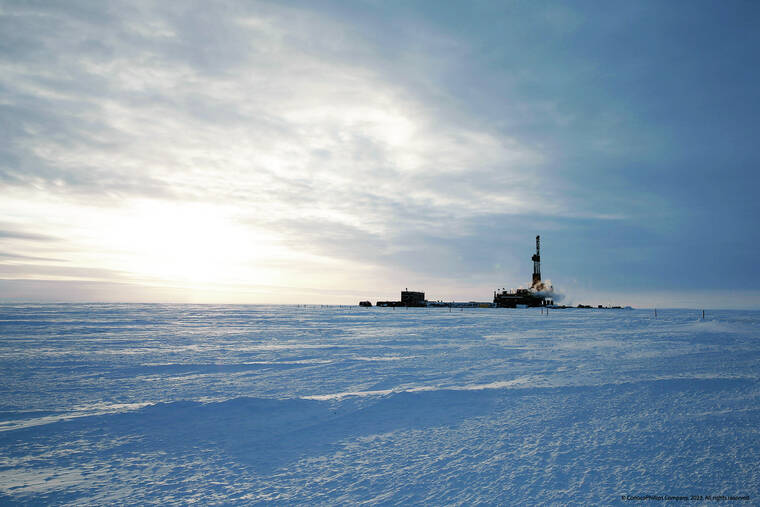Willow oil project approval intensifies Alaska Natives’ rift
ANCHORAGE, Alaska — The Biden administration’s approval this week of the biggest oil drilling project in Alaska in decades promises to widen a rift among Alaska Natives, with some saying that oil money can’t counter the damages caused by climate change and others defending the project as economically vital.
Two lawsuits filed almost immediately by environmentalists and one Alaska Native group are likely to exacerbate tensions that have built up over years of debate about ConocoPhillips Alaska’s Willow project.
ADVERTISING
Many communities on Alaska’s North Slope celebrated the project’s approval, citing new jobs and the influx of money that will help support schools, other public services and infrastructure investments in their isolated villages. Just a few decades ago, many villages had no running water, said Doreen Leavitt, director of natural resources for the Inupiat Community of the Arctic Slope. Housing shortages continues to be a problem, with multiple generations often living together, she said.
“We still have a long ways to go. We don’t want to go backwards,” Leavitt said.
She said 50 years of oil production on the petroleum-rich North Slope has shown that development can coexist with wildlife and the traditional, subsistence way of life.
But some Alaska Natives blasted the decision to greenlight the project, and they are supported by environmental groups challenging the approval in federal court.
The acrimony toward the project was underscored in a letter dated earlier this month written by three leaders in the Nuiqsut community, who described their remote village as “ground zero for industrialization of the Arctic.” They addressed the letter to Interior Secretary Deb Haaland, a member of New Mexico’s Laguna Pueblo and the first Native American to lead a Cabinet department.
They cited the threat that climate change poses to caribou migrations and to their ability to travel across once-frozen areas. Money from the ConocoPhillips project won’t be enough to mitigate those threats, they said. The community is about 36 miles (58 kilometers) from the Willow project.
“They are payoffs for the loss of our health and culture,” the Nuiqsut leaders wrote. “No dollar can replace what we risk. … It is a matter of our survival.”
But Asisaun Toovak, the mayor of Utqiaġvik, the nation’s northernmost community on the Arctic Ocean, told the AP that she jumped for joy when she heard the Biden administration approved the Willow project.
“I could say that the majority of the people, the majority of our community and the majority of the people were excited about the Willow Project,” she said.
Willow is in the National Petroleum Reserve-Alaska, a vast region on Alaska’s resource-rich North Slope that is roughly the size of Maine. It would produce up to 180,000 barrels of oil a day, the use of which would result in at least 263 million tons (239 million metric tons) of greenhouse gas emissions over 30 years, according to a federal environmental review.
The Sovereign Iñupiat for a Living Arctic, Sierra Club and other groups that sued Tuesday said Interior officials ignored the fact that every ton of greenhouse gas emitted by the project would contribute to sea ice melt, which endangers polar bears and Alaska villages. A second lawsuit seeking to block the project was filed Wednesday by Greenpeace and other environmental groups.
For Alaska Natives to reconcile their points of view with one another, it will take discussions.


